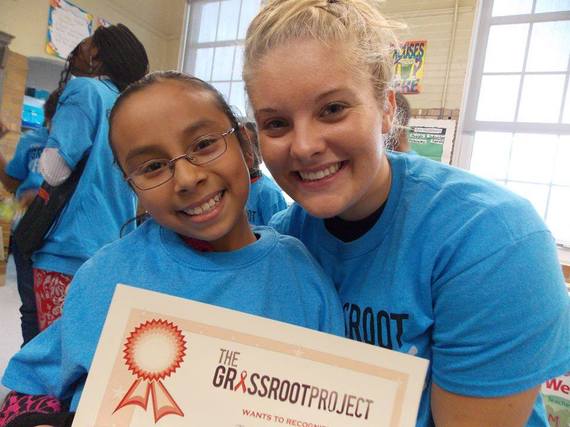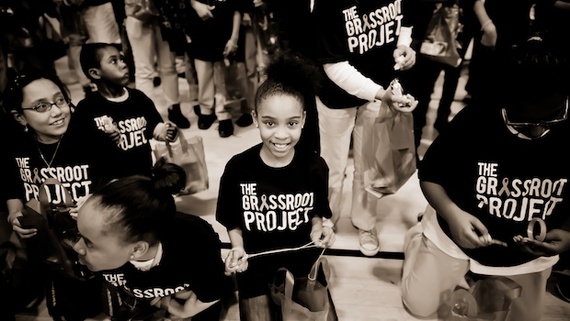There are about 1.2 million people living with HIV in the US, with 659,000 deaths from AIDS-related illnesses since the start of the HIV/AIDS epidemic, according to AVERT. Internationally, world leaders committed to achieve 17 Global Goals, with "Good Health and Well-Being" ranked third--one target being to end the epidemic of AIDS by 2030. The sport for development sector can play a role in educating our youth through the power of sport, by providing mentors and recreational activities that keep them from engaging in risky activities that can lead to contracting the virus.
Youth are susceptible to contracting HIV in two ways: in the first decade of their life (during pregnancy, childbirth, or breastfeeding), or in the second decade of their life (through unprotected sex or sharing infected needles). With sexual health and HIV/AIDS education, youth can be empowered with knowledge and make informed decisions before partaking in risky behaviors and think twice before getting involved in sexual acts or drug use. Throughout the US, there are varying policies about sexual health education and HIV/AIDS education. 22 states and the District of Columbia require public schools to teach sex education (20 of which mandate including HIV education). 33 states and the District of Columbia require students to learn about HIV/AIDS, according to the National Conference of State Legislatures. It is important to note that not all 50 states are required to teach students about sexual health education and HIV/AIDS.
Most people are aware that the HIV/AIDS epidemic is a global issue, and internationally, the sport for development sector is incorporating HIV/AIDS curricula into youth sport programs where HIV/AIDS is prevalent. Laureus supports projects in Africa and India that aid youth living with HIV/AIDS, youth who have lost their families due to the illness, and work and educate youth on HIV/AIDS prevention. A study conducted with Grassroot Soccer, an international sport for development program based in Zambia and South Africa that implemented a soccer and HIV/AIDS education program, found that players developed better resiliency through playing sports. According to the study,
"a resilient youth is less likely to engage in risky behavior, more likely to avoid HIV infection, and more likely to live a healthy life."
There is evidence that these projects are making a difference, so the US should follow suit; our youth sport programs are the additional outlet that can access youth. According to Sportanddev.org, "the role of sports coaches as role models and mentors has proved a vital component of HIV/AIDS prevention programs using sport" since they provide support and guidance for these youth during a critical time in their lives. However, there is a gap that needs to be filled in the US; we need more youth programs that incorporate both sport and HIV/AIDS education in order to touch the lives of these kids while they are young, so they can make informed decisions as they grow up. One program that has spearheaded the movement is The Grassroot Project, an organization whose mission is to use sports to influence social change by educating at-risk youth in the Washington DC community about HIV/AIDS awareness and prevention. The Grassroot Project was founded based off of Grassroot Soccer in Africa, and uses college athletes as messengers and games to teach lessons about HIV/AIDS. It is evident that we should listen to the experts and follow the models in Africa and replicate them in the US to accomplish the same goal of educating our youth about HIV/AIDS using sport.
Kids look up to celebrities over the course of their lives, and those involved in sports idolize athletes. There are many famous athletes who have battled HIV/AIDS and have used their fame to raise awareness about their illness. Tennis legend Arthur Ashe faced his diagnosis head on and helped others learn about HIV/AIDS to eradicate the negative stigma about the illness. Former basketball star Magic Johnson started the Magic Johnson Foundation with a focus on HIV/AIDS education and prevention to help reach youth and raise public awareness about the illness. He started an education program called Empowering and Reinforcing Awareness of Students Through Education to teach kids about HIV/AIDS and encourage dialogue about the illness. We need to rely on the other people youth look up to in fighting this epidemic as well. In the sport for development sector, coaches can play this role in youth sport programs by educating kids about HIV/AIDS.
While there are youth sport programs in the US that are successful in providing mentorship and life skills for kids, it is beneficial to consider adding curricula to teach sexual health and HIV/AIDS, too. Coaches in these programs can play essential roles in guiding these youth towards making the right choices for their future. It is our job to take the reins on the Global Goals and be changemakers. We have the power to use sport as a tool to empower our youth and teach them to make educated decisions to halt the spread of HIV/AIDS once and for all.

